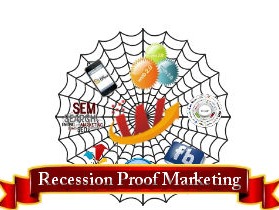
Why Paid Search and Social Ads are Key to Event Promotion
Promoting events effectively is crucial for attracting attendees and maximizing participation. One excellent strategy is using paid search and social ads. These tools allow you to reach a targeted audience who is likely to be interested in your event, increasing the chances of a successful turnout.
Understanding Your Target Audience
The first step in any advertising campaign is understanding who your audience is. Consider their demographics: age, interests, and behaviors. Use tools like Google Analytics and social media insights to gather data about your audience. With this information, you can tailor your messages to address their specific interests, ensuring that your ads resonate.
The Impact of SEO on Paid Advertising
While paid ads can drive immediate traffic, integrating SEO strategies can enhance their effectiveness. When your ads are optimized for search engines, they reach users actively looking for information related to your event. Including relevant keywords, such as "event promotion strategies" or the name of your event, can boost visibility in organic searches, leading to greater overall attendance.
Creating Engaging Content for Social Ads
Social media platforms are visual. Therefore, your ads should be eye-catching and informative. Use high-quality images and compelling calls-to-action in your ads. Consider including a short video to convey excitement about your event. The key is to connect emotionally with potential attendees, ensuring they see the value in participating.
A/B Testing Ads for Better Results
One of the best ways to improve your paid search and social ads is by conducting A/B tests. This involves creating different versions of your ads and monitoring which performs better. For example, you might test different headlines or images. Analyze the data closely; it will provide insights into what resonates with your audience and allows you to refine your strategies effectively.
The Importance of Timing
When you promote your event is just as important as how you do it. Begin your advertising campaign weeks ahead of the event to build momentum. During this lead-up time, you can leverage retargeting ads to reach visitors who engaged with your event page but didn't register yet. This reminder can significantly improve your conversion rates.
Utilizing Google Ads for Maximum Exposure
Google Ads is a powerful tool for event promotion. It allows you to reach users searching for relevant keywords. By appearing at the top of search results, you increase the chances of driving traffic to your event page. Additionally, targeting specific geographic areas can help localize your audience, making attendees feel more connected to your event.
Engaging with Your Audience on Social Media
Lastly, utilize social media not just for advertising but for engaging with your audience. Respond to comments, share updates about the event, and create shareable content. By fostering a community around your event, you encourage more people to participate and share the experience with others.
By leveraging paid search and social ads strategically, you can promote your events effectively and achieve impressive turnout rates. Put these tips into practice, and watch your events thrive!
 Add Row
Add Row  Add
Add 




Write A Comment